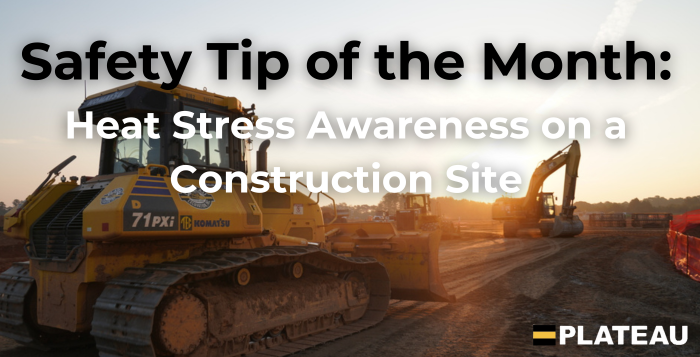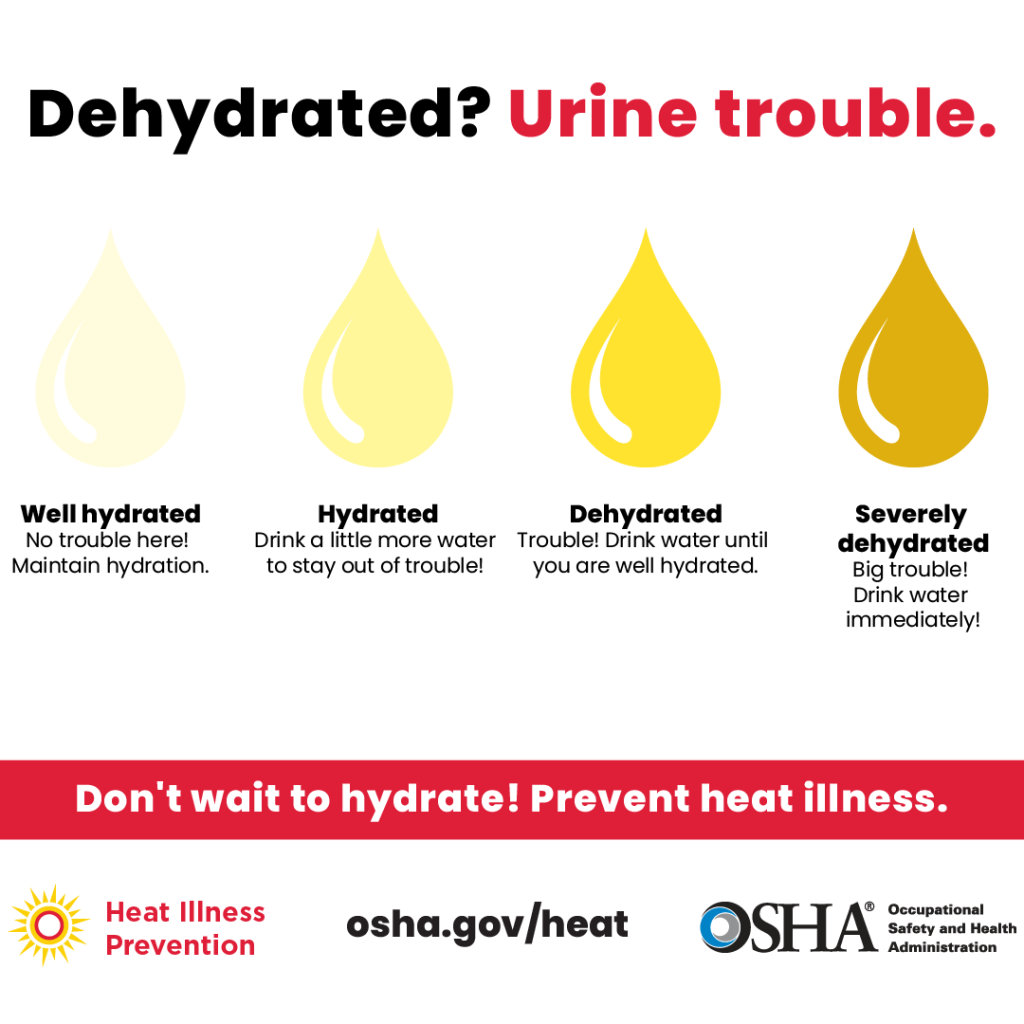Plateau Excavation

Heat Stress Awareness on a Construction Site
According to the CDC, there were 702 deaths, 67,512 emergency room visits, and 9,235 individuals hospitalized in the 2022 & 2023 calendar years. In addition, there were 100 worker-related deaths and 6,800 heat-related injuries that required an overnight stay in a hospital in the 2019 & 2020 calendar years, according to the Bureau of Labor Statistics. The number of heat-related injuries is far higher during the months of June, July, and August.
Heat Illness Symptoms
If employees exhibit any of the following symptoms, appropriate action must be taken to get the employee to a cooler area and get them hydrated. If symptoms are severe, call 911.
- Hot, thirsty, fatigued – Get out of the heat and to the onsite cooling station
- Hot, thirsty, fatigued, and nauseous – Get attention
- Hot, thirsty, fatigued, nauseous, and confused – Call EMS
Who is most likely to experience heat-related symptoms?
- New workers not acclimated or accustomed to performing physical work in a hot environment
- Physically unfit or persons on medication that can cause dehydration
- People who have had previous heat disorders
- People who have been drinking alcohol or large amounts of caffeine
Heat Stress Disorders & Treatments
A. Dehydration is a condition that occurs when there is not enough fluid in the body to carry on normal functions. Even mild dehydration can sap strength and cause fatigue. Excessive thirst, fatigue, headache, dry mouth, little or no urination, muscle weakness, and dizziness or lightheadedness are all potential indicators of dehydration. If dehydration is suspected immediately:
- Move to a place of shade and begin substantial fluid intake.
- Seek medical treatment if symptoms fail to subside or become extreme (heat exhaustion).
B. Heat Exhaustion is a more serious problem caused by loss of body fluids (extreme dehydration) and failure to replenish them properly. Symptoms are weakness, dizziness, nausea, clammy skin, and heavy sweating.
Immediately:
- Move to a place of shade (not extreme cold).
- Provide lots of fluids.
- Should vomiting or loss of consciousness occur, seek medical treatment immediately.
C. Heat Stroke is a medical emergency. It can cause permanent damage to the brain and/or vital organs and can even result in death. It occurs when the body cannot cool itself due to the overload of its normal temperature-regulating systems. Symptoms are dry mouth, hot skin, a body temperature of 104 or more, confusion, delirious behavior, loss of consciousness, or coma.
Immediately:
- Seek professional medical attention
- Initiate cooling of the body by moving the victim to a place of shade,
- Soak the victim’s clothing in cool water (not ice water), and
- Fan the body to encourage cooling.
Ways Plateau Encourages Employees to Avoid Heat Stress
1) Acclimate: Allow employees to adjust to the heat gradually by increasing the time spent. During an extreme heat wave and with new employees, supervisors or a designated employee must be extra vigilant of the signs and symptoms of heat illness.
2) Adopt special habits: Persons should drink cool water regularly to make up for loss of body fluid; up to 2 gallons per day; avoid energy drinks and drinks high in caffeine; eat light meals; and get plenty of rest after work ends.
3) Outdoor Clothing: Wear lightweight, loose clothing. Wear sun shades on your hard hat and use the cooling towels and hard hat cooling cloths that go on the inside of the hard hat. We provide these items to all employees. They can be obtained at the Austell office by seeing Keyera/Cason.
4) Use the provided cool-down stations on your job site, which consist of a tent or shaded area with cool drinking water.
